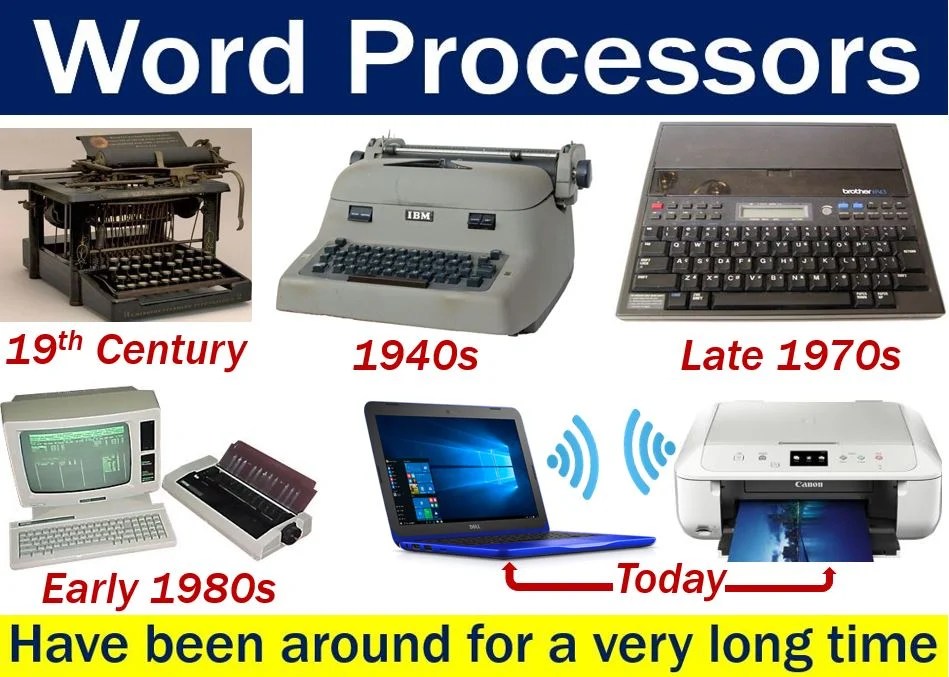Word processing technology has transformed how we create, edit, format, store, and share textual documents. Understanding the critical milestones in its history provides insights into how innovative tools emerge and become common, which is helpful for you as a UPSC Aspirant.
Early dedicated word processors, like the IBM MT/ST, were introduced in the 1960s, laying the foundation of Word Processing technology. This processor combined a Selectric typewriter with magnetic tape for storage, a significant innovation over manual retyping. However, navigating and editing text on it was still a big problem.
The 1970s welcomed screen-based digital word processors like the Wang 1200. Its CRT display lets users view and revise text quickly before printing. Early word processing software also arrived at the same time, including WordStar for CP/M systems. But they lacked visual formatting capabilities, just like we have today.
In the 1980s, machines like the Wang VS put features like spell check on standalone word processors. Meanwhile, software like WordPerfect brought similar improvements to PC word processing. But WYSIWYG (what you see is what you get) editing still needed to be included.
This changed in the mid-1980s with MacWrite for Macintosh and later Microsoft Word for Windows. It completely changed how we used to work with word processing software by adding new concepts like fonts, sizes, and styles on screen while editing. Word processing finally became genuinely visual. Other advancements, like grammar checks, mail merges, and tables, also arrived in this period.
By the 1990s, rapidly improving PCs replaced dedicated word processor machines. Microsoft Word, bundled with Office, dominated business and home markets. New features for images, charts, and desktop publishing further advanced the technology in year 2000.
In the 2010s, word processing entered the cloud computing era. Web-based tools like Google Docs and Word Online allow real-time collaboration on documents. The rise of smartphones and tablets also made word processing mobile.
So in just a few decades, word processing evolved rapidly from niche machines to a widely used software capability. What began as a specialized office tool is now a daily utility for work and learning for UPSC aspirants and millions of other users.

